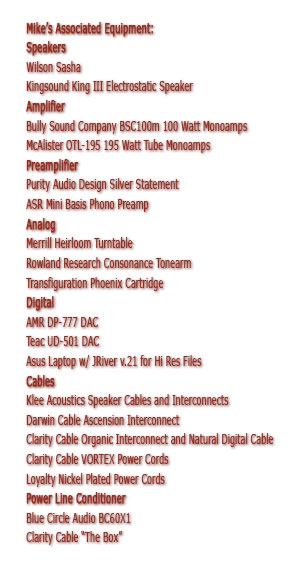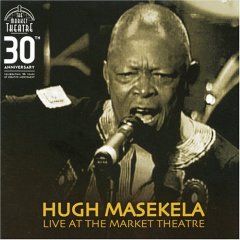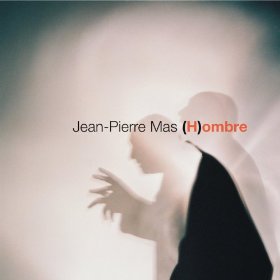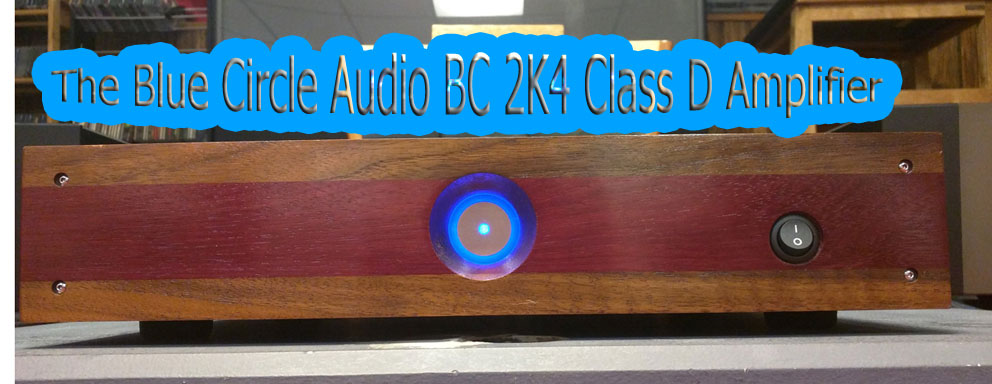Blue Circle Audio BC 2K4 Class D Amplifier
 It was interesting that the first product that I would be asked to review in my return to Stereo Times would be a Class-D amplifier. My early experiences with them were not very favorable. My initial impressions of the sound was: exciting, at first, then boring and uninvolving after about 30 minutes. Class-D power seemed to run out of steam and weren’t able to sustain their low-end performance during the second hour of listening. Combine these thoughts with the fact that I am currently happily using a pair of massive, Class-A mono amps from Bret D’Agostino’s Bully Sound Company and you can understand that the amp I was being asked to review would have to do a lot to impress me.
It was interesting that the first product that I would be asked to review in my return to Stereo Times would be a Class-D amplifier. My early experiences with them were not very favorable. My initial impressions of the sound was: exciting, at first, then boring and uninvolving after about 30 minutes. Class-D power seemed to run out of steam and weren’t able to sustain their low-end performance during the second hour of listening. Combine these thoughts with the fact that I am currently happily using a pair of massive, Class-A mono amps from Bret D’Agostino’s Bully Sound Company and you can understand that the amp I was being asked to review would have to do a lot to impress me.
Thankfully, the amp was the latest design from talented designer Gilbert Yeung, founder of Blue Circle Audio. He asked me if I would be interested in reviewing a new solid-state, Class-D amplifier called the BC 2K4. Initially, I was a little timid for reasons I stated above but the more I thought about how this company and Yeung’s designs have grown over the years, going from that tubey sound in their earlier years to the neutral sound they’re producing today, my curiosity got the better of me and I agreed to write a review.

 Technically Speaking
Technically Speaking
About a month after our initial discussion, Yeung came to my house and made sure the 2K4 got along with everything in my system and that the amplifier was acting as it should. We did a little listening, and with everything sounding satisfactorily, he soon left. As I mentioned previously, the 2K4 is a solid-state, Class-D amplifier. It is rated at 300W into 8 Ohms and 600W into 4 Ohms. It’s about the size of an average preamp measuring 17”W X 3.25”H X 15”D and weighing in at 23 lbs. The standard finish of the faceplate is stainless steel but the review sample was finished in a handsome Purpleheart/Walnut wood, which is an available option (price not yet known). There is a black power switch and the familiar Blue Circle logo in the center which illuminates when power is engaged. The rear plate of the 2K4 holds a pair of speaker posts, your choice of single-ended or balanced (or both) inputs, IEC connector and a ground lift switch. The chassis is made of steel. Interestingly enough, the 2K4 is derived from a very flexible amplifier platform that offers customers their choice of output power ranging from 150W to 2000W, with some models being bridgeable, some models being available as monoblocks, and some can even be ordered as a hybrid with a 6SN7 tube in the input stage.
Per the BCA website, “The class AB solid-state input stage of the 2K4 Series is based upon our reference power amp, the NSL. Yeung refers to this input stage as a “ differential-balanced parallel topology”. In the hybrid version, a unity gain 6SN7 circuit is added to the solid-state input stage that can be switched in or out of the signal path by the listener. Again, it should be noted that this can be done while you are listening to the music so you can decide which mode works best for a given recording. All 2K4 amps will accept both single-ended and balanced inputs.”
How it sounds
Being aware that this particular 2K4 was almost new, I decided to let it run for a few days with my old CD player running on repeat. During those first three days, giving the 2K4 a cursory listen, initially, I was not impressed. I felt like “here we go again with that Class-D amp sound.” The sound was lacking life, excitement and was musically uninvolving. Then, after that third day of break-in was done, and I began my critical listening, I must confess that I was startled, and in a good way, at what I was hearing. Those sonic artifacts that I felt Class-D amps would have difficulty overcoming were nowhere to be found in the 2K4. I expected the sound to be more detailed than musical and be more disinteresting as time wore on. Instead the 2K4 was as musical as just about any amplifier that I have spent any time listening to. In fact, it didn’t sound like a Class-D amp at all. There was warmth and naturalness in spades. The sound was more reminiscent of a Class-AB amp that does Class-A for like the first 10 watts or so, sounding warm and sweet at the lower volumes then showing its dynamic side once you start to turn up the volume. I spent most of my listening not even remembering that the 2K4 was a Class-D amplifier because it allowed me to enjoy the music I put thru it without any harshness or glare. The 2K4 possesses a lifelike, natural sound. Vocals were natural with tones that were distinct and very present. There was plenty of detail and information to hear but never at the expense of the music being played. The upper frequencies were airy and extended but not with any artifacts that drew attention. The midrange of the 2K4 was present and realistic and that region where the lower midrange and upper bass come into play was lively and involving. Bass lines were very easily followed and drums sounded rhythmic and energetic. The 2K4 had pleasing bass reproduction and really gave my Wilson Sasha’s all the low-end extension and drive they needed. Transient response and micro-dynamic information was reproduced very well, with snap and impact. Stage dimensions had noticeably good height, breadth and depth while the performers on the stage had a high degree of focus and seemingly existed in real space.
 Listening to Hugh Masekela’s Live at the Market Theatre [Four Quarters Entertainment] presented a good test for the amplifier’s ability to reproduce the dynamic impact and shadings captured on live recordings. A popular track for testing this is “Stimela.” The 2K4 was able to play this track loudly and did so with great ease and sonic accuracy that made listening to this disc a fun experience. This was especially true of the ability of the 2K4 to be able to handle the volume demands from the preamplifier. The sound can get loud but stay clean. The 2K4 never sounded hard or out of control.
Listening to Hugh Masekela’s Live at the Market Theatre [Four Quarters Entertainment] presented a good test for the amplifier’s ability to reproduce the dynamic impact and shadings captured on live recordings. A popular track for testing this is “Stimela.” The 2K4 was able to play this track loudly and did so with great ease and sonic accuracy that made listening to this disc a fun experience. This was especially true of the ability of the 2K4 to be able to handle the volume demands from the preamplifier. The sound can get loud but stay clean. The 2K4 never sounded hard or out of control.
 Violinist Jenny Scheinman’s 12 Songs [Cryptogramophone] presented a good test for the 2K4’s ability to reproduce a closely mic’d violin. Ms. Scheinman, who has played violin on several of well-known guitarist Bill Frisell’s albums displays great bowing technique and improvisation skills that made for some very even-handed listening. She can play very lyrically, as she does on “Sleeping In The Aquifer,” and she can also play discordant as she does with “Moe Hawk” and “Satellite.” The 2K4 helped to reproduce a lot of detail and information from this disc, such as the sound of Ms. Scheinman’s bowing technique as well as the instrumentalists breathing as they play.
Violinist Jenny Scheinman’s 12 Songs [Cryptogramophone] presented a good test for the 2K4’s ability to reproduce a closely mic’d violin. Ms. Scheinman, who has played violin on several of well-known guitarist Bill Frisell’s albums displays great bowing technique and improvisation skills that made for some very even-handed listening. She can play very lyrically, as she does on “Sleeping In The Aquifer,” and she can also play discordant as she does with “Moe Hawk” and “Satellite.” The 2K4 helped to reproduce a lot of detail and information from this disc, such as the sound of Ms. Scheinman’s bowing technique as well as the instrumentalists breathing as they play.
 French jazz pianist and composer Jean-Pierre Mas’ CD (H)ombre [Sunnyside Records] recording is one of my favorites because the of the Latin themed music, the tuneful ease with which the music was recorded and the variety of instruments being played. Mr. Mas includes on this album, besides his stellar piano playing, a variety of instruments including Xavier Desandre (percussion) and Andre Ceccarelli (drums), Daniel Mille (accordion and acordina) Juan Jose Mosalini (bandoneon), Sylvain Marc (electric bass), Didier Lockwood (violin), and Idriss Boudrioua (tenor/soprano saxophone). This disc contains some strong percussive and bass lines. The 2K4 did an impressive job at controlling the midbass and deep rumble on the track “Pouie D’Eau” and the strong drum whacks on (H)ombre and Flor de Vengaza.
French jazz pianist and composer Jean-Pierre Mas’ CD (H)ombre [Sunnyside Records] recording is one of my favorites because the of the Latin themed music, the tuneful ease with which the music was recorded and the variety of instruments being played. Mr. Mas includes on this album, besides his stellar piano playing, a variety of instruments including Xavier Desandre (percussion) and Andre Ceccarelli (drums), Daniel Mille (accordion and acordina) Juan Jose Mosalini (bandoneon), Sylvain Marc (electric bass), Didier Lockwood (violin), and Idriss Boudrioua (tenor/soprano saxophone). This disc contains some strong percussive and bass lines. The 2K4 did an impressive job at controlling the midbass and deep rumble on the track “Pouie D’Eau” and the strong drum whacks on (H)ombre and Flor de Vengaza.
 On Jiang Ting’s CD Voices of the Pipa [MA Recordings M06IA] we have another example of how the 2K4 handles a complex piece of music. Ms.Ting has truly mastered this ancient Chinese instrument, which is a fretted lute with four strings, played almost exclusively by women, mainly due to the fact that you need long nails to bend the strings in order to get the sound you’re striving for; sort of like the how Stevie Ray Vaughn bends his guitar strings to reach the desired notes. The transient response of the 2K4 allowed me to clearly follow Ms. Ting’s technique strumming the notes acquired from being able to bend the strings. Also, the 2K4’s speed allowed me to hear Ms. Ting’s fingers moving up and down the pipa as well as the snap and decay on the strings. One thing to note here would be in reference to the 2K4’s tonal neutrality. The Jean Pierre Mas disc, tonally, was very warm sounding whereas the Jenny Scheinman disc could at times sound slightly on the bright side, mainly because of the emphasis on capturing the tone of the violin in different modes of portrayal. The 2K4 sounded bright and detailed when the music called for it just as it could sound warm and lush if the album was recorded that way.
On Jiang Ting’s CD Voices of the Pipa [MA Recordings M06IA] we have another example of how the 2K4 handles a complex piece of music. Ms.Ting has truly mastered this ancient Chinese instrument, which is a fretted lute with four strings, played almost exclusively by women, mainly due to the fact that you need long nails to bend the strings in order to get the sound you’re striving for; sort of like the how Stevie Ray Vaughn bends his guitar strings to reach the desired notes. The transient response of the 2K4 allowed me to clearly follow Ms. Ting’s technique strumming the notes acquired from being able to bend the strings. Also, the 2K4’s speed allowed me to hear Ms. Ting’s fingers moving up and down the pipa as well as the snap and decay on the strings. One thing to note here would be in reference to the 2K4’s tonal neutrality. The Jean Pierre Mas disc, tonally, was very warm sounding whereas the Jenny Scheinman disc could at times sound slightly on the bright side, mainly because of the emphasis on capturing the tone of the violin in different modes of portrayal. The 2K4 sounded bright and detailed when the music called for it just as it could sound warm and lush if the album was recorded that way.
Final thoughts
The 2K4 was well behaved while it was in my system. There were no pops or hums or noise of any kind. On the days where I really pounded on it, and there were more than a few of those, it never got much more than luke-warm. I did a lot of equipment, interconnect and speaker cable changing, especially the speaker cables, and it never gave me cause for concern.
I remember the day Yeung dropped off the amp, after he made sure the amplifier was performing satisfactorily, he asked me to play some of my reference bass recordings. This caught me off guard because he usually asks me to play something with vocals or piano when making sure a review component is setup and working properly. But since he was obviously trying to show off his amp’s deep bass prowess, I said to myself, “He wants some bass, eh? I’ll show him some bass.” I lined up some of the good stuff, at least the stuff that came to mind, and since the wife was not home, I could play it as loud as I wanted. So I hit the unsuspecting 2K4 with some soundtrack offerings that would suit my needs. I played “No Sign of Ghosts” from Casper [Geffen], “A Call To Arms” from Glory [Virgin], “The Invasion” from Seven Years In Tibet [Sony], “Root Beer” from American Beauty [Geffen], “The Town Burns” from Rosewood [Sony], “Assault On Ryan’s House” from Patriot Games [RCA] and for good measure, Anne Bissom’s “Us and Them” from her Portaits & Perfumes [Camilion] album. Mind you, I didn’t just play these tracks one after another just once. No sir. I played them over and over and over again. Some I played six or seven times straight. That 2K4 didn’t even flinch. That darned 2K4’s blue-eyed logo just looked right back at me and asked, “Is that was all you got?” All I could do was return a defeated look, shake my head, concede and marvel at the 2K4’s ability to deliver bass to my beloved Sasha’s. The 2K4 had the Sasha’s shaking things in other rooms. Despite the heavy duty, it never got more than lukewarm. The sound never got hard, and it played music just as sweetly and tunefully as it did before I went into Dr. Frankenstein mode. That was very impressive. I looked over at the mass and heft of my Bully Sound mono amps and came away shaking my head as the 2K4 drove the Sasha’s to levels pretty close to theirs. It’s really difficult some times to quantify what one piece of electronics can do compared to another, especially when you take cost into consideration. With Blue Circle’s BC 2K4 it’s easy to see, and especially hear, that it compares to amps 3-4 times its $4,295 price. It will not embarrass a system comprised of much more expensive components. I don’t know how Yeung is able to make such an exceptional sounding amplifier at that price point, but I can assure you that you will be pleasantly surprised once you give it a listen.


Aside from this review, I was fortunate enough to have a little Q&A session with Gilbert Yeung and below are some of his insights regarding the BC 2K4:
1. What was your reasoning for wanting to develop a Class D amplifier?
I have been tinkering with class D on and off for the past 5 or 6 years, but I was never satisfied nor had I heard any other class D amps that sounded good enough to satisfy me. By good enough I guess I mean musical enough. They just seemed to be lacking in soul. However, after 6 years of experimentation and a number of dead ends, I have found a design that is good enough to bear the Blue Circle logo in terms of sonic performance. The most common response that I have received from beta testers and reviewers is that our class D amps do not sound like they really are class D. I take that as a complement.
Class D has both advantages and disadvantages but at this point I can say that the advantages of this class D design are significant enough to outweigh the disadvantages. Having said that, we still make class AB amps, and will continue to do so, because Class D and class AB still sound different enough for both to exist. I truly believe that there can be different sounding components that can all sound very good. Part of it is taste or personal preference and some of it is the trade-offs that you make as a designer. Audio design, like our lifes, is the art of the possible and except when money is no object you have to make some decisions as to where your priorities lie. Class D allows me to do things at a price point that I cannot do in class AB.
2. Do you think you reached your goal and how do you feel about your achievement?
I feel that I have reached my goal with the BC 2K4 or I would not have released it as a Blue Circle product. I am satisfied with the results, especially compared to what is available on market right now. But by tomorrow I could change my mind if I find a way to improve on the design.
I am always looking for a way to push the design envelope.
3. Is there anything about what you’ve done that you would like to share with readers?
This is a tough one. I never feel that what I have done is special. I just try to build the best circuitry that I can. What else is there to say?
4. Any comments regarding your circuit or what you’ve created?
This design, like all of my designs, is a combination of two things.
First the design parameters have to be grounded in solid scientific theory. It has to make sense; it has to pass certain standard tests and evaluations. The second part is much harder to explain. The science takes you so far and then inspiration gets you up to the next level. As the old saying goes, it can test good and sound bad, but it cannot test bad and sound good. A great designer is a combination of engineer and artist. It is the level of inspiration that separates the good from the special. Think of it in terms of pianists playing a Beethoven sonata.
They all play the same notes, but there is something indefinable about the truly gifted, the maestros who have a superior level of inspiration, that special something that sets them apart. We all know it when we hear it and the same is true about great audio components.
5. What can you tell us about the quality of the parts you use?
Not much to say here except that far too often people put far too much emphasis on the brand name of parts without having any valid information and/or understanding about what supposedly makes them superior. Often it is just hype to justify a huge increase in price. Often these supposed super components are significantly inferior parts. I use the parts that work best and pay little attention to what their “reputation” is.
6. What are your thoughts on the 2K4’s cost-versus-performance ratio?
For more than 25 years building components that offer exceptional value has been one of the cornerstones of the Blue Circle philosophy. Far too often designers forget that the vast majority of music lovers have limited financial resources. Personally I think this amp offers great value but my opinion means very little in the long run. People like you Mike, and those who part with their hard-earned dollars to buy one of my amps; you are the ones who will make that determination.


Specifications:
Blue Circle Audio BC 2K4 Class D Amplifier – $4,295
Manufacturer
Blue Circle Audio
Address:
RR2
Innerkip, Ontario, Canada
N0J 1M0
Ph 519-469-3215
Fax 519-469-3782
Website: http://www.bluecircle.com
Email: bcircle@bluecircle.com
Stereo Times Masthead
Publisher/Founder
Clement Perry
Editor
Dave Thomas
Senior Editors
Frank Alles, Mike Girardi, Russell Lichter, Terry London, Moreno Mitchell, Paul Szabady, Bill Wells, Mike Wright, and Stephen Yan,
Current Contributors
David Abramson, Tim Barrall, Dave Allison, Ron Cook, Lewis Dardick, John Hoffman, Dan Secula, Don Shaulis, Greg Simmons, Eric Teh, Greg Voth, Richard Willie, Ed Van Winkle, Rob Dockery, Richard Doran, and Daveed Turek
Site Management Clement Perry
Ad Designer: Martin Perry






Be the first to comment on: Blue Circle Audio BC 2K4 Class D Amplifier